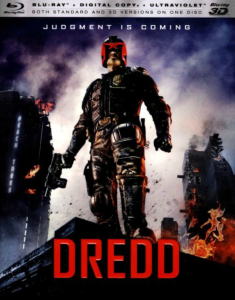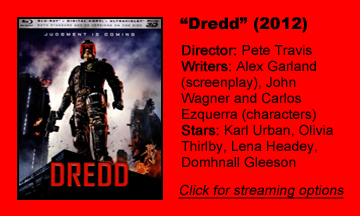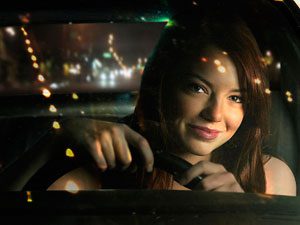“Dredd” (2012) — the second go at bringing comicdom’s single-minded future cop to the big screen — is tight, simple and brisk. It’s objectively better than Sylvester Stallone’s “Judge Dredd” (1995), particularly in regard to the main character’s portrayal – by Karl Urban this time – but it’s actually a shallower text than the first version.
Concerned with action and atmosphere more than police-state critiques, “Dredd” wins the battle of the “Judge Dredd” adaptations entirely with coolness points.
A horrible world to live in
By far the most well-known film from director Pete Travis, “Dredd” presents a horrible world to live in. This is clear at a glance as Dredd’s narration plays over panning shots of Mega City One, which stretches from Boston to D.C. and looks like the worst parts of Detroit, St. Louis and Baltimore mashed into one metropolis. (Outside of the walled city is a wasteland that we never visit.)
Even worse, it’s filled with bad and indifferent people. Those who aren’t outright evil run and hide when the shooting starts, or they gawk until they themselves take a stray bullet.
In a surprisingly simple story from Alex Garland, who is known for complex material ranging from the masterful “Ex Machina” to the pretentious “Annihilation,” Dredd and his trainee, Anderson (Olivia Thirlby), are locked down in a four-quadrant high rise with an open-air central shaft.
(Since this is an R-rated crime actioner, suffice it to say that more people take this shaft to the ground than take the elevator.)
It’s the two judges against hundreds of members of the drug-dealing organization led by Ma-Ma (Lena Heady, “Terminator: The Sarah Connor Chronicles”), who rules from the top floor. Ma-Ma, with her “Mad Max”-ian stained teeth and scarred face, wipes out the other gangs in the building – called Peach Trees in a rare nod to dark humor – mainly by being meaner.
The always-great Urban – who ventured into a sunnier police state in TV’s “Almost Human” one year later — is an outstanding lead, acting only with the lower half of his face since his helmet covers his eyes.
An unambiguous mission
Since Dredd is going against clear bad guys here, there’s no ambiguity in the mission at hand, and Garland doesn’t dig into the irony that the judge system is part of the city’s problem. The 1995 film goes deeper into the questions of whether Dredd and the system he works for are good or bad, redeemable or hopelessly corrupt.
Thirlby is an appealing against-type casting choice. She looks kind of like Ellen Page, and Anderson is a grittier version of an “X-Men” mutant. Her power is psychic ability – mind-reading, in other words – so she’s actually better at her job than most judges, who simply use their judgements in determining guilt, innocence and sentencing. If all judges had Anderson’s ability, this system might almost be morally defensible.
Anderson (who doesn’t wear a helmet, in order to use her psychic power) is the most likeable character, but even she is broody. She’s so unimpressed with this inflexible system that she hands in her badge after the mission.
She notes that she at least did one bit of good, letting Domhnall Gleeson’s tech guy go free. Her mind-reading ability tells her that he had been coerced into working for Ma-Ma – he’s a victim, not a perp. It’s something the average judge can’t account for.
Steeped in style
The reason “Dredd” is so widely admired, and rightfully so, is the style. The closed location – shot in South Africa – is similar to “The Raid” from one year earlier. There’s something compelling about an action movie in a locked-down skyscraper, especially when it’s a compact 95 minutes long.
Paul Leonard-Morgan’s score calls to mind dystopian 1980s films from “Escape to New York” to “The Terminator” with its driving synthetic sounds, but it’s not obtrusive. The effects team gives us the most artistic bodies splattering on concrete you’re likely to see. The drug at issue is Slo-Mo, and Travis and his team beautifully translate its effects to viewers via slow-motion shots.
I suspect Garland might’ve been planning to parse out an arc exploring Dredd’s increasing level of humanity if this had grown into a saga. Because Ma-Ma’s gang is so evil, Dredd is certainly the lesser evil, but there’s little doubt he has perpetuated a perverse brand of justice off-screen. He’s no superhero, although Anderson arguably fits the bill and Dredd himself might be on that path.
We aren’t likely to see that future, as “Dredd” is considered a dead cinematic property. But at least it comes alive for this brisk blast of gritty action and style.



